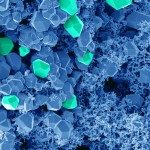Présentation
Mercredi 27 novembre
à 10h00
Salle AMPHI. JACQUES MONOD
Martin Marek
Loschmidt Laboratories, Department of Experimental Biology and RECETOX,
Masaryk University, Kamenice 5, 62500 Brno, Czech Republic
e-mail: martin.marek@recetox.muni.cz
“Molecular basis for evolution of the Renilla-type bioluminescence”
Enzymes catalyse most of the chemical reactions that occur in living organisms and can be given non-natural catalytic functions by protein engineering. However, despite their vast importance, we know very little how enzymes acquire the structural diversity and conformational flexibility that enable them to evolve towards new molecular functions.
Our recent data on two structurally similar but functionally distinct enzyme classes of haloalkane dehalogenases (EC 3.8.1.5) and coelenterazine-utilizing Renilla-type luciferases (EC 1.13.12.5) suggest that protein dynamic elements – flexible loops – play a pivotal role in their functional diversification. Using a multi-method approach, which combined ancestral sequence reconstruction, mutagenesis, advanced mass spectrometry, X-ray crystallography, protein simulations and transient kinetics, we uncovered key molecular elements that favour the functional shift from hydrolytic dehalogenation to light-emitting monooxygenation (bioluminiscence). Moreover, our crystal structures of Renilla-type luciferases capture unprecedented molecular details of the conformational sampling that is required for productive coelenterazine-dependent bioluminescence.
Collectively, our results delineate the molecular basis and evolutionary trajectory leading to the emergence of Renilla-type bioluminescent reaction. Our findings will thus pave the way for the creation of next-generation luciferases and luciferins exploitable in cell biology research and biosensor technologies.
